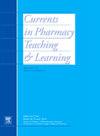Do Swedish universities educate future doctors and pharmacists about the environmental impact of pharmaceuticals?
IF 1.4
Q3 EDUCATION, SCIENTIFIC DISCIPLINES
引用次数: 0
Abstract
Objectives
Residues of pharmaceuticals, originating from production, distribution or consumption, reach the environment where they have negative consequences on ecosystems. Educating future physicians and pharmacists could promote more environmentally friendly decisions throughout the life-cycle of pharmaceuticals. The aim of this cross-sectional study was to describe how pharmaceuticals in the environment was integrated into Swedish universities' medicine and pharmacy educations.
Methods
The study was conducted November–December 2022 and consisted of two parts; i) a review of program curricula for medicine and pharmacy programs in Sweden and ii) a questionnaire distributed to course managers at pharmacy programs, and to program managers at medicine programs. Multiple-choice questions were analysed with descriptive statistics. Open-ended questions and program curricula were assessed qualitatively with content analysis.
Results
Pharmaceuticals in the environment was mentioned in the general learning objectives aligned with the Higher Education Ordinance, but content related to environment was only included in curricula for some courses, mainly regarding sustainable development. A total of 47/100 pharmacy course managers and 6/7 medicine program managers responded to the questionnaire. 19/47 pharmacy course managers and 6/6 medicine program managers indicated that their courses include aspects of pharmaceuticals in the environment. The most common areas in pharmacy courses were sustainable drug use, and sustainable drug manufacturing/development.
Conclusions
Sweden's medicine and pharmacy programs contain some education about environmental impacts of pharmaceuticals but the curricula could be developed further. There is room for improvement in integrating environmental themes throughout the programs, potentially as an interprofessional education with a life-cycle perspective of pharmaceuticals.
瑞典的大学教育未来的医生和药剂师关于药物对环境的影响吗?
药品的残留源于生产、分销或消费,到达环境并对生态系统产生负面影响。教育未来的医生和药剂师可以在药品的整个生命周期中促进更环保的决策。这项横断面研究的目的是描述环境中的药物如何融入瑞典大学的医学和药学教育。方法研究于2022年11 - 12月进行,分为两部分;i)对瑞典医学和药学专业课程的回顾;ii)向药学专业的课程经理和医学专业的课程经理分发问卷。用描述性统计分析多项选择题。开放式问题和项目课程通过内容分析进行定性评估。结果与《高等教育条例》一致的一般学习目标中提到了环境中的制药,但与环境相关的内容仅在部分课程中被纳入,主要是关于可持续发展的课程。共有47/100名药学课程管理人员和6/7名医学项目管理人员回答了问卷。19/47的药学课程经理和6/6的医学项目经理表示,他们的课程包括药物在环境中的各个方面。药学课程中最常见的领域是可持续药物使用和可持续药物制造/开发。结论瑞典的医学和药学专业包含了一些关于药物对环境影响的教育,但课程可以进一步发展。在整个项目中整合环境主题还有改进的空间,有可能作为一种跨专业的教育,从药物生命周期的角度来看。
本文章由计算机程序翻译,如有差异,请以英文原文为准。
求助全文
约1分钟内获得全文
求助全文
来源期刊

Currents in Pharmacy Teaching and Learning
EDUCATION, SCIENTIFIC DISCIPLINES-
CiteScore
2.10
自引率
16.70%
发文量
192
 求助内容:
求助内容: 应助结果提醒方式:
应助结果提醒方式:


